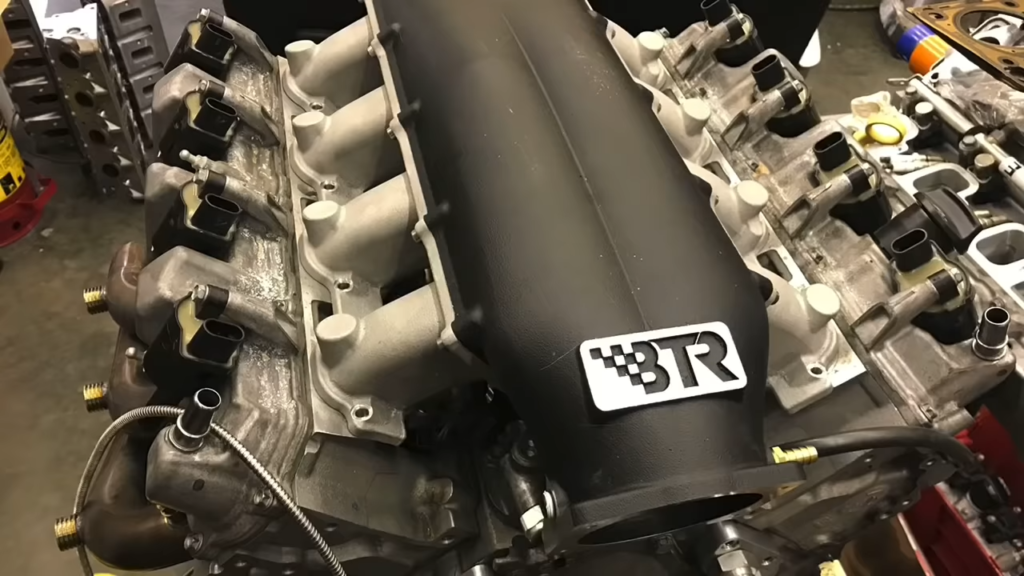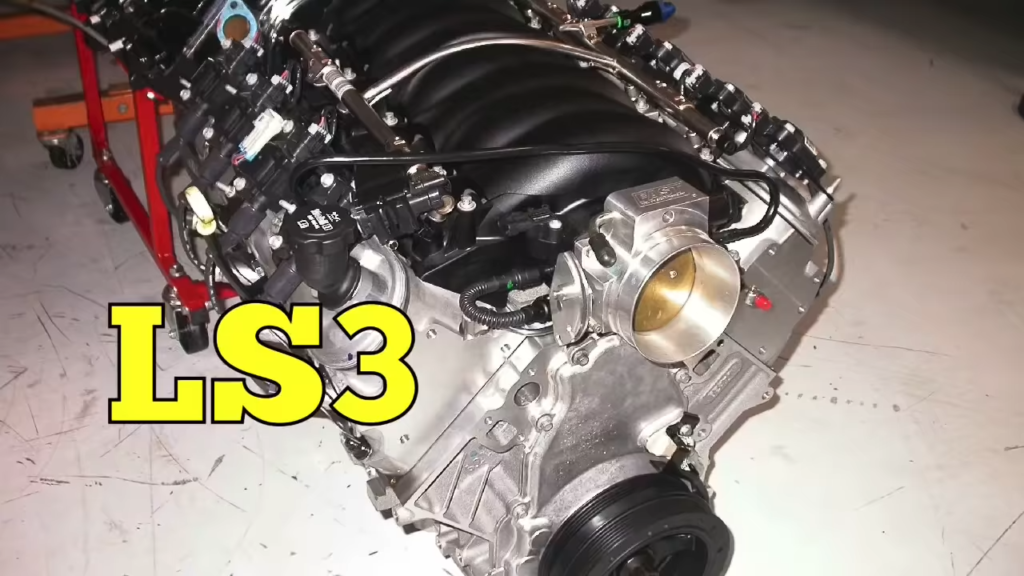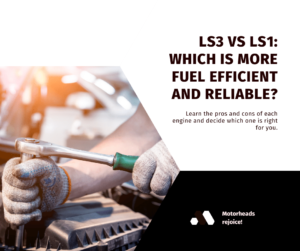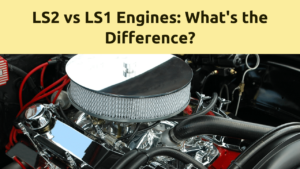Contents
Introduction
When it comes to high-performance engines, the LT1 and LS3 are two names that often surface in discussions among automotive enthusiasts. These engines, developed by General Motors, have their own set of characteristics that set them apart. In this comprehensive article, we will delve deep into understanding the key differences between LT1 and LS3 performance engines. From power and design to applications and reliability, we’ll cover it all.
LT1 vs. LS3: A Tale of Two V8 Powerhouses
Both LT1 and LS3 engines are revered for their performance capabilities, but they cater to slightly different niches within the enthusiast world. Here’s a table to unravel their key differences:
| Feature | LT1 (1992-1997) | LS3 (2007-2013) |
|---|---|---|
| Displacement: | 5.7L (350 ci) | 6.2L (376 ci) |
| Horsepower: | Varies by model (275-350 hp) | Varies by model (415-480 hp) |
| Torque: | Varies by model (330-360 lb-ft) | Varies by model (400-475 lb-ft) |
| Power Delivery: | Smooth and linear power curve | More aggressive power curve with higher peak output |
| Intake Manifold: | Single-plane design for higher top-end power | Dual-plane design for improved low-end and mid-range torque |
| Exhaust Manifolds: | Cast iron | Stainless steel headers for improved flow |
| Internals: | Cast iron block, hypereutectic pistons, powdered metal rods | Aluminum block, forged pistons, forged connecting rods |
| Transmission: | Manual and automatic options | Primarily manual transmission options |
| Applications: | Chevrolet Camaro, Pontiac Firebird, Chevrolet Corvette | Chevrolet Camaro, Chevrolet Corvette, Pontiac G8, Holden Commodore VE |
| Collectibility: | Highly sought-after, especially early models | Growing in value due to performance and rarity |
| Price: | Generally more affordable | Can be more expensive due to higher performance and newer technology |

Additional Considerations:
- Both engines respond well to modifications, offering significant power gains with upgrades.
- The LS3 is generally smoother and easier to tune due to its modern design.
- Parts availability is good for both engines, though LS3 parts might be slightly more expensive.
Overall:
- LT1: A classic V8 known for its smooth power delivery, affordability, and high tunability, ideal for enthusiasts seeking a balanced muscle car experience.
- LS3: A modern powerhouse boasting higher horsepower, aggressive torque, and refined performance, perfect for those who prioritize cutting-edge muscle car thrills.

Understanding the Key Differences Between LT1 and LS3 Performance Engines
Power and Performance
The heart of any performance engine lies in its power output. Both the LT1 and LS3 engines are capable of delivering impressive power, but they do so in different ways.
The LT1 engine is known for its torque-rich performance, making it an excellent choice for low-end power. It produces around 455 horsepower and 455 lb-ft of torque. This engine’s power delivery is smooth and consistent, making it ideal for daily driving and street applications.
On the other hand, the LS3 engine boasts a higher horsepower rating, typically around 430-436 horsepower and 424 lb-ft of torque. Its power curve is more linear, which means it delivers power progressively as the RPMs climb. This makes the LS3 a favorite among track and high-revving performance enthusiasts.
Design and Architecture
A significant factor that sets these two engines apart is their design and architecture.
The LT1 engine features a compact design with a direct injection system, which enhances fuel efficiency and combustion efficiency. It also incorporates cylinder deactivation technology, allowing it to operate on fewer cylinders under light load conditions, further improving fuel economy.
On the other hand, the LS3 engine relies on a traditional port fuel injection system. It does not have cylinder deactivation, which means it operates on all cylinders at all times. While this can affect fuel efficiency, it contributes to the engine’s high-performance capabilities.

Applications
The choice between the LT1 and LS3 engines often depends on the intended application.
The LT1 engine is commonly found in Chevrolet’s sports cars like the Camaro and Corvette. Its torquey nature makes it well-suited for these rear-wheel-drive vehicles, providing excellent acceleration and handling.
The LS3 engine, with its high-revving characteristics, is frequently used in high-performance sports cars like the Chevrolet Corvette C6. Its power delivery is more suitable for track use and aggressive driving.
Reliability and Maintenance
Reliability is a critical factor to consider when comparing these engines.
The LT1 engine, with its compact design and advanced technology, tends to be more reliable and fuel-efficient in everyday driving scenarios. Its cylinder deactivation system can also contribute to longer engine life.
The LS3 engine, while powerful, may require more maintenance, especially if pushed to its limits on the track. However, with proper care and maintenance, it can also offer years of dependable performance.
FAQs
Q: Which engine is better for daily driving, LT1, or LS3?
A: The LT1 engine is better suited for daily driving due to its torque-rich performance and fuel efficiency.
Q: Can I swap an LS3 engine into a car originally equipped with an LT1?
A: Yes, it is possible to perform an engine swap, but it may require modifications and compatibility checks.
Q: Are there aftermarket upgrades available for both engines?
A: Yes, there is a wide range of aftermarket upgrades available for both the LT1 and LS3 engines to enhance their performance further.
Q: Which engine is more fuel-efficient?
A: The LT1 engine is generally more fuel-efficient due to its advanced technology and cylinder deactivation.
Q: Are these engines compatible with manual transmissions?
A: Yes, both the LT1 and LS3 engines can be paired with manual transmissions, offering enthusiasts a more engaging driving experience.
Q: Can I use E85 ethanol fuel with these engines?
A: Yes, both engines can run on E85 ethanol fuel with proper tuning and modifications.
Conclusion
In conclusion, the LT1 and LS3 performance engines are both formidable powerhouses in the automotive world. Each engine has its own unique characteristics that cater to different driving preferences and applications. Whether you prioritize torque for daily driving or seek high-revving power for track days, understanding the key differences between LT1 and LS3 engines will help you make an informed decision when choosing your next performance vehicle or engine swap project.
============================================
Affiliate Disclosure: As an Amazon Associate, I earn from qualifying purchases made through links on this site.







